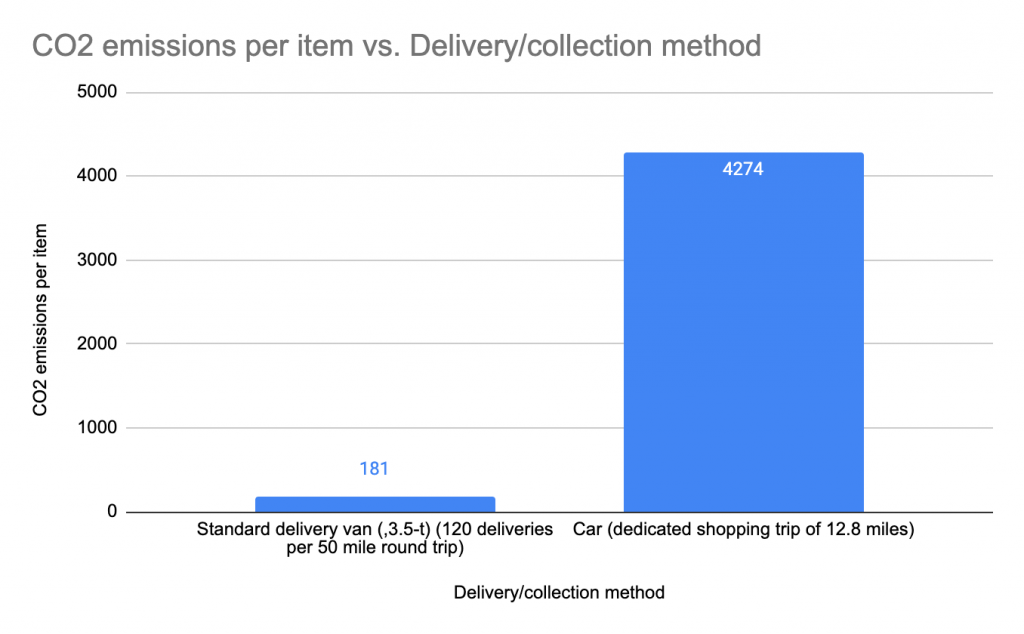In an early article I discussed the perils of higher carbon print in online grocery shopping (mainly from a paper by Van Loon et al (2015). However, let’s not forget that the paper did find that when it comes to delivery using dedicated vans carrying a large basket size (as opposed to just a few items with third-party parcel delivery network), it was quite carbon-efficient.
Now the question is: What about non-grocery?
In a paper by Edwards et al (2009), they look at the carbon footprint of the “last-mile” delivery of online shopping of non-grocery items. The authors did a rigorous study of the CO2 emission of using standard delivery van making about 120 delivery in a typical 50 mile round trip, vs consumers driving their private cars to shop and pick up an item. Which one is more carbon-intensive? The answer is unequivocal:

The large difference is truly remarkable. Private consumer trips generate over 25x more than using delivery vans!
The logic is clear: Delivery vans have a much larger efficiency because they pool many individual orders together and make drops on one trip. As a result, their carbon footprint is much lower per item delivered.
The implication is clear: We should use delivery services as much as we can, as long as those delivery vans can make multiple drops. In theory, as long as delivery vans can make more than 1 deliveries on a trip (holding the same driving distance), then it is better off for the environment.
This also imply that some of the new crowd-sourcing delivery services (Uber, GrubHub) may not be as CO2-efficient, because most of those kinds of trips are 1-to-1 replacing consumers’ private trips. Those services should think of ways to combine trips as much as they can.